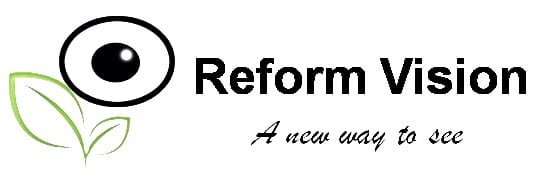Myopia Control Clinic
Myopia is a common eye condition in which the light coming from infinity focuses in front of the retina instead of focusing on it. Myopia is one of the most common and leading causes of a decrease in vision throughout the world. It is one of the five immediate priorities of the “Vision 2020” initiative by the World Health Organization (WHO).
Myopia develops gradually and worsens with age. People with myopia typically complain of blurred distance vision and clear near vision.
Etiology:
Genetics: It runs in family for example if any of the parents are myopic then the child is most likely at risk of developing myopia. The risk increases, even more, when both parents are myopic.
Environmental condition: Some studies suggest when a child spends more time indoors when compared to outdoors the chances of developing myopia increases.
Symptoms:
• Blurred distance vision.
• Squeezing eyes while seeing distant objects.
• Headache (due to eyestrain).
• Photophobia at night.
Myopia symptoms in children:
• Squinting
• Sitting closer to the TV or classroom
• Too much blinking
• Frequent rubbing of eyes
• Shorter attention period
• Poor grades (unable to see classroom board)
• Holding books or objects close to the face

What is myopia control?
Myopia control clinics specialize in managing nearsightedness (myopia) to slow down its progression in people, especially kids. These clinics use a variety of methods and therapies to slow the progression of myopia since severe cases can raise the chance of developing glaucoma, and retinal detachment in later life.
Some studies suggest that One Diopter (Diopter is a term used to measure your sight correction) increase in Myopia increases the chance of developing macular degeneration or loss of vision by 67% in later life. On the contrary, One Diopter decrease in Myopia decreases the chances of developing macular degeneration or loss of vision by 40%.
The goal of the treatment is to slow down its progression. This can protect child’s eyes in future although they have to wear glasses or contact lenses.
Who needs myopia management?
• Sitting too near the TV or having difficulty copying what’s written on the board.
• First time myopia lens user.
• Continuous changes in the spectacle power.
• Parents having myopia.
• The longer time spent performing close work.
• Less time spent on outdoor activities.
Common strategies used in myopia control clinics include:
• Orthokeratology, or Ortho-K, is the use of gas permeable contact lenses with specialised designs that reshape the cornea overnight to improve vision during the day without the need for contacts or glasses.
• Atropine eye drops or multifocal lenses are used to slow down the progress of myopia.
• Behavioral Adjustments: To promote outdoor activities and cut back on excessive close work (such as prolonged screen time).
• Myopia control glasses: These glasses focus the light rays onto the retina in a way that, the retina signals the brain to slow down the growth of the eyeball. An increase in the length of the eyeball is the main cause of progressive myopia, myopia control glasses help by slowing down the axial growth of the eyes.
• Myopia control contact lenses: These contact lenses also work by slowing down the axial length of the eye.
• Or combination of any of the above.
Depending upon the power, age and eye condition treatment for myopia control are planned. Sometimes your practitioner may suggest two combined treatment plans.
What to anticipate:
A comprehensive eye examination lasting one to one and a half hour would be performed to record the initial readings for multiple parameters. These parameters including patient age, family history of myopia, eyeball length, and strength of eye muscle—will contribute to the design of our myopia management plan.
Every four to six months, your kid would be examined to assess how their myopia is progressing.
Healthy habits for eyes:
Encourage at least 90 minutes of outdoor activities.
• Look at 20 feet distance for 20 seconds). During prolonged near work encourage using the 20-20-20 rule (after every 20 minutes
• Limit screen time.
• Lifestyle plays a major role in the developing and progression of myopia. Research has shown that spending more time indoors and prolonged near work increases the risk of myopia.
Follow the above rules for healthy eyes.
When to see a doctor:
When you experience the following symptoms consult your ophthalmologist immediately:
• The sudden appearance of floaters in one or both eyes.
• Sudden flashes of light in one or both eyes.
• The appearance of a shadow-like thing in one or both eyes.
This could be a sign of retinal detachment and will require immediate medical attention. Other eye-related conditions associated with myopia are macular degeneration, choroidal degeneration and open-angle glaucoma. Myopia control methods can help in reducing the risk of these complications associated with myopia.

